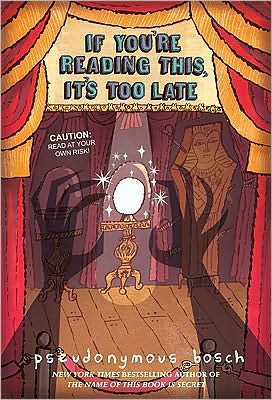Silent to the Bone
Speechless \ Connor is sure his best friend, Branwell, couldn't have hurt Branwell's baby half sister, Nikki. But Nikki lies in a coma, and Branwell is in a juvenile behavioral center, suspected of a horrible crime and unable to utter the words to tell what really happened. Connor is the only one who might be able to break through Branwell's wall of silence. But how can he prove Branwell didn't commit the unspeakable act of which he's accused -- when Branwell can't speak for himself?\ \ \...
Search in google:
On Wednesday, November 25, at 2:43 pm, Eastern Standard Time, Branwell Zamborska is struck dumb. Nikki, his baby half sister, has slipped into a coma. Branwell dials 911, but when the emergency operator answers, he cannot speak. He cannot explain what is wrong. He cannot utter a sound. Vivian Shawcurt, the au pair from England, takes over. She tells the emergency medical team that Branwell dropped Nikki and shook her. As Branwell's best friend, Connor investigates the events leading up to the silence, he slowly discovers what Branwell's problems really are and what it takes to help Branwell reveal what happened that Wednesday afternoon. Publishers Weekly"This middle-grade novel combines a plot loosely based on a real case with a taut psychological mystery. The author inlays the story with tantalizing facts and peoples it with her hallmark idiosyncratic characters and joins every element seamlessly," said PW's Best Books citation. Ages 10-14. (Jan.) Copyright 2004 Reed Business Information.
\ Chapter One: Days One, Two, & Three\ It is easy to pinpoint the minute when my friend Branwell began his silence. It was Wednesday, November 25, 2:43 p.m., Eastern Standard Time. It was there -- or, I guess you could say not there -- on the tape of the 911 call.\ Operator: Epiphany 911. Hobson speaking.\ SILENCE.\ Operator: Epiphany 911. Hobson. May I help you?\ SILENCE. [Voices are heard in the background.]\ Operator: Anyone there?\ A woman's voice [screaming in the background]: Tell them. Tell them.\ Operator: Ma'am, I can't hear you. [then louder] Please come to the phone.\ A woman's voice [still in the background, but louder now]: Tell them. [then, screaming as the voice approaches] For God's sake, Branwell. [the voice gets louder] TELL THEM.\ SILENCE.\ Operator: Please speak into the phone.\ A woman's voice [heard more clearly]: TELL THEM. NOW, BRAN. TELL THEM NOW.\ SILENCE.\ A woman's voice with a British accent [heard clearly]: Here! Take her! For God's sake, at least take her! [then, speaking directly into the phone] It's the baby. She won't wake up.\ Operator: Stay on the phone.\ British Accent [frightened]: The baby won't wake up.\ Operator: Stay on the line. We're transferring you to Fire and Rescue.\ Male Voice: Epiphany Fire and Rescue. Davidson. What is the nature of your emergency?\ British Accent: The baby won't wake up.\ Male Voice: What is your exact location?\ British Accent: 198 Tower Hill Road. Help, please. It's the baby.\ Male Voice: Help is on the way, ma'am. What happened?\ British Accent: He dropped her. She won't wake up.\ Male Voice: Is she having difficulty breathing?\ British Accent [panicky now]: Yes. Her breathing is all strange.\ Male Voice: How old is the baby, ma'am?\ British Accent: Almost six months.\ Male Voice: Is there a history of asthma or heart trouble?\ British Accent: No, no. He dropped her, I tell you.\ LOUD BANGING IS HEARD.\ British Accent [into the phone]: They're here. Thank God. They're here. [then just before the connection is broken] For God's sake, Branwell, MOVE. Open the door.\ The SILENCES were Branwell's. He is my friend.\ The baby was Nicole -- called Nikki -- Branwell's half sister.\ The British accent was Vivian Shawcurt, the baby-sitter.\ In the ambulance en route to the hospital, Vivian sat up front with the driver, who was also a paramedic. He asked her what had happened. She told him that she had put the baby down for her afternoon nap and had gone to her room. After talking to a friend on the phone, she had started to read and must have dozed off. When the paramedic asked her what time that was, she had to confess that she did not know. The next thing she remembered being awakened by Branwell's screaming for her. Something was wrong with the baby. When she came into the nursery, she saw Branwell shaking Nikki, trying to get her to wake up. She guessed that the baby went unconscious when he dropped her. She started to do CPR and told Branwell to call 911. He did, but when the operator came on the line, he seemed paralyzed. He would not give her the information she needed. He would not speak at all.\ Meanwhile the paramedic who rode with the baby in the ambulance was following the ABC's for resuscitation -- airway, breathing, and circulation. Once inside the trauma center at Clarion County Hospital, Nikki was put on a respirator and wrapped in blankets. It was important to keep her warm. A CAT scan was taken of her head, which showed that her injuries could cause her brain to swell. When the brain swells, it pushes against the skull, and that squeezes the blood vessels that supply the brain. If the supply of blood to the brain is pinched off, the brain cannot get oxygen, and it dies.\ The doctor drilled a hole in Nikki's skull and put in a small tube -- no thicker than a strand of spaghetti -- to drain excess fluid from her brain to lower the pressure. Nikki did not open her eyes.\ Later that afternoon, a police car arrived at 198 Tower Hill Road and took Branwell to the Clarion County Juvenile Behavioral Center. He said nothing. Nothing to the doctors. Nothing to his father, to his stepmother. Calling to Vivian was the last that Branwell had spoken. He had not uttered a sound since dialing 911.\ Dr. Zamborska, Branwell's father, asked me to visit him at the Behavioral Center and see if I could get him to talk. I am Connor, Connor Kane, and -- except for the past six weeks or so -- Branwell and I had always been best friends.\ When Dr. Z called me, he reported that the pressure in Nikki's skull was dropping, and that was a good sign, but, he cautioned, she was still in a coma. She was in critical condition, and there was no way of knowing what the outcome would be.\ I was not allowed to see Branwell until Friday, the day after Thanksgiving. On that first visit to the Behavioral Center and on all the visits that followed, I had to stop at a reception desk and sign in. There I would empty my pockets and, when I had my backpack with me, I would have to open it as well. If I had nothing that could cause harm to Branwell or could let him cause harm to someone else (I never did), I was allowed to put it all back and take it with me.\ That first time the guard brought Branwell into the visitors' room, he looked awful. His hair was greasy and uncombed, and he was so pale that the orange jumpsuit he wore cast an apricot glow up from his chin just as his red hair seemed to cast the same eerie glow across his forehead. He shuffled as he walked toward me. I saw that his shoes had no laces. I guessed they had taken them from him.\ Branwell is tall for his age -- I am not -- and when he sat across the table from me, I had to look up to make eye contact, which was not easy. His eyeglasses were so badly smudged that his blue eyes appeared almost gray. It was not at all like him to be uncombed and to have his glasses smeared like that. I guessed the smudges were to keep him from seeing out, just as his silence was to keep him from speaking out.\ On that first awful, awkward visit, a uniformed guard stood leaning against the wall, watching us. There was no one else in the visitors' room, and I was the only one talking, so everything I said, every sound I made, seemed to echo off the walls. I felt so responsible for getting Branwell to talk that I asked him a bunch of dumb questions. Like: What happened? And: Was there anything he wanted to tell me? He, of course, didn't utter a sound. Zombielike, he slowly, slowly, slowly shook his head once, twice, three times. This was not the Branwell I knew, and yet, strangely, it was.\ Dr. Zamborska had asked me to visit Bran because he figured that I probably knew Branwell better than anyone else in Epiphany -- except for himself. And because we had always seemed to have a lot to say to each other. We both loved to talk, but Branwell loved it more. He loved words. He had about five words for things that most people had only one word for, and could use four of five in a single sentence. Dr. Z probably figured that if anyone could get Bran to talk, it would be me. Talk was like the vitamins of our friendship: Large daily doses kept it healthy.\ But when Dr. Z had asked me to visit Branwell, he didn't know that about six weeks before that 911 call something had changed between us. I didn't know what caused it, and I didn't exactly know how to describe it. We had not had a fight or even a quarrel, but ever since Monday, Columbus Day, October 12, something that had always been between us no longer was. We still walked to the school bus stop together, we still got off at the same stop, and we still talked. But Branwell never seemed to start a conversation anymore. He not only had less time for me, he also had less to say to me, which, in terms of our friendship, was pretty much the same thing. He seemed to have something hidden.\ We had both turned thirteen within three weeks of each other, and at first I wondered if he was entering a new phase of development three weeks ahead of me. Was something happening to him that would happen to me three weeks later? Had he started to shave? I looked real close. He hadn't. (I was relieved.) Had he become a moody teenager, and would I become one in three more weeks? Three weeks passed, and I didn't. Then six weeks passed -- the six weeks between Columbus Day and that 911 call -- and I still had not caught the moodiness that was deepening in my friend. And I still did not know what was happening to Bran.\ After that first strange, clouded visit, I decided that if I was going back (and I knew that I would), nothing good was going to come out of my visits unless I forgot about our estrangement, forgot about having an assignment from Dr. Z, and acted like the old friend I was.\ *\ • *\ Once on our way to the school bus stop in the days when Branwell was still starting conversations, he asked me a famous question: "If a tree falls in the forest and no one is there to hear it, does it make a sound?" When he asked me, I couldn't answer and neither could he, but when I left him that first Friday of his long silence, I thought that Branwell could answer it. On that day and for all the days that followed when he made no sound, my friend Branwell was screaming on the inside. And no one heard.\ Except me.\ So when Branwell at last broke his silence, I was there. I was the first to hear him speak. He spoke to me because even before I knew the details, I believed in him. I knew that Branwell did not hurt that baby.\ I won't say what his first words were until I explain what I heard during the time he said nothing.\ Copyright © 2000 by E. L. Konigsburg
\ Publishers Weekly\ - Publisher's Weekly\ The latest from Newbery Medalist Konigsburg--a taut novel with the momentum of a detective story--never catches fire in this ultimately disappointing audio adaptation. When his infant half sister Nikki appears unconscious, 13-year-old Branwell Zamborska rushes to call for help. But when the 911 operator asks him for key information, Branwell cannot speak; he's been struck mute, seemingly by the tragic, frightening situation. The family's British au pair completes the emergency call and accuses Branwell of injuring the baby. While Nikki lies in a coma at the hospital, Branwell is sent to a facility for troubled youths. It's there that Branwell's best friend Connor Kane devises a code for communicating with Branwell and, with help from his older half sister Margaret, begins to untangle the truth about what really happened to Nikki. Konigsburg's crisply drawn tale crackles on the page as narrated by Connor. But McGillin never truly inhabits Connor's skin. He seems to strain for a chipper, youthful intonation in each sentence. And with this forced rhythm, McGill fails to convey the emotional intensity and suspense of the text. Ages 10-up. (Oct.) Copyright 2000 Cahners Business Information.\ \ \ \ \ Publishers Weekly"This middle-grade novel combines a plot loosely based on a real case with a taut psychological mystery. The author inlays the story with tantalizing facts and peoples it with her hallmark idiosyncratic characters and joins every element seamlessly," said PW's Best Books citation. Ages 10-14. (Jan.) Copyright 2004 Reed Business Information.\ \ \ Children's LiteratureThe transcript of a distress call to 911 opens this story of silences, emergent sexuality, family and honor. Someone dropped Branwell's baby sister and Vivian, the pretty au pair, accuses him. But Branwell has stopped being able to speak, so no one knows his side of the story. When his best friend, Connor, is called in to help, the boys develop a creative method of communicating. Connor spreads out flashcards in front of Bran, who blinks at the one carrying a word or symbol that represents something or someone to the boys. Like the other children we have met from the town of Epiphany (The View from Saturday), these boys are bright and painfully sensitive. Connor gradually pieces together the crucial events, as well as Bran's emotional situation, by beginning to feel the allure of Vivian's taunting sexuality. By enlisting the help of his adult half-sister, and speaking with Branwell's father and stepmother, he facilitates some much needed bonding in both blended families. Although Vivian is drawn one-dimensionally as a sexual predator and cruelly neglectful babysitter, Connor and Branwell's story will speak volumes to sensitive young teen readers. 2000, Atheneum, $17.00. Ages 12 to 14. Reviewer: Jendy Murphy\ \ \ \ \ VOYANewbery Award winner for both The Mixed-Up Files of Mrs. Basil E. Frankweiler (Atheneum, 1967) and The View from Saturday (Atheneum, 1996), Konigsburg provides mystery and intrigue, woven with wit and warmth in this multilayered detective story. Fans of The View from Saturday will revisit the setting of Epiphany, New York, and be introduced to more teens who harbor exceptional vocabularies and above-average intellectual abilities. Readers quickly become engaged in thirteen-year-old Conner's twenty-day search to determine why his best friend, Branwell, has stopped talking, and how this silence is linked to Branwell's baby sister's coma. Before the accident, the two boys loved to play games with words; afterward, Conner relies on their unique forms of communication to help solve the mystery and to help Branwell emerge from his silent world. Conner's search not only helps Branwell, it also brings the two boys closer to their families, which have been strained due to divorce, death, and remarriage. This book takes the themes of friendship, family, loyalty, trust, communication, and growing up and merges them into a tightly woven tale that explores human relationships at their deepest levels. At first, some readers might be put off by the brilliant characters' sophisticated banter, but the pace will quickly grab readers' attention as they try to determine the reason for Branwell's silence. VOYA CODES: 5Q 4P M J S (Hard to imagine it being any better written; Broad general YA appeal; Middle School, defined as grades 6 to 8; Junior High, defined as grades 7 to 9; Senior High, defined as grades 10 to 12). 2000, Atheneum/S & S, 272p, $16. Ages 12 to 18. Reviewer: Denise Beasley\ SOURCE: VOYA, December 2000 (Vol. 23, No. 5)\ \ \ \ \ \ School Library JournalGr 5-8-Thirteen-year-old Connor goes on an inner voyage of self discovery when he starts unraveling the events that led to a frantic 911 call and his best friend's inexplicable muteness. E.L. Koningsburg's compelling coming of age story (Atheneum, 200) opens as Branwell Zamborska is accused of seriously injuring Nikki, his infant half sister. At the same time, his sudden silence leaves him unable to defend himself. Although Connor and Branwell have had recent differences, their friendship dates to nursery school, and Connor seems to be the only one who can communicate with Branwell. Aided by his half sister, Margaret, Connor not only manages to uncover the truth that frees his friend to speak, but he also helps heal some of his own family relationships. Howard McGillin is equally at ease in the voices of the introspective teens and a range of adult characters including Vivian, the vixenous English au pair, heard on the 911 call. An uneven plastic case may prove susceptible to damage, and a bit of misinformation about Margaret in the cover notes should not be an impediment to purchasing this well-done recording. With a good dose of suspense and an honest look at problems encountered by second time around families, Koningsburg fans young and older will enjoy this audiobook.-Barbara S. Wysocki, Cora J. Belden Library, Rocky Hill, CT Copyright 2001 Cahners Business Information.\ \ \ \ \ From The CriticsSilent To The Bone deserves ongoing recognition as an excellent, unusual title filled with psychological suspense and mystery. Branwell is struck mute when his baby sister is gravely injured in his care; it's up to his best friend to decipher Branwell's cryptic clues about what really happened. The process is slow but the mystery is compelling with a surprise twist to keep readers guessing.\ \ \ \ \ U.S. News & World Report[A] haunting mystery...\ \ \ \ \ Kirkus ReviewsThe small New York town in which Konigsburg offered a View From Saturday (1996, Newbery Medal) is again the setting for a series of rich and subtle studies in friendship and family. It's framed as a whodunit. Someone dropped baby Nikki, who now lies in the hospital in critical condition. From what Vivian, her au pair, says on the 911 tape and in a later deposition, it was Nikki's teenaged half-brother Branwell—who can't defend himself because he's retreated into utter, seemingly unresponsive silence. Fortunately, Branwell has a stubborn, sharply observant friend in Connor, the narrator, who finds a way to communicate using homemade flash cards and eye blinks, then, at Branwell's unspoken direction, embarks on a series of fact-finding expeditions. The pieces fall neatly into place as Connor, with his older half-sister Margaret, analyzes new information and interviews potential suspects, from Vivian, as smarmy a minx as ever was, to a pizza deliverer she has been seeing on the sly—who, conveniently, turns out to be a witness requiring little persuasion to tell all. The mystery of Branwell's mutism remains, however, and Konigsburg handles that with more expertise, revealing how his silence after the incident had roots in his silence about certain earlier events. In the end, Nikki and Branwell make full recoveries and justice catches up with the true culprit. What starts out as an intriguing plot turns predictable, but Konigsburg's characters and the textures of their relationships are fascinating and worth every minute spent with them. (Fiction. 11-13)Kvasnosky, Laura McGee ZELDA AND IVY: One Christmas Illus. by the author Candlewick (48 pp.) Oct. 2000\ \








